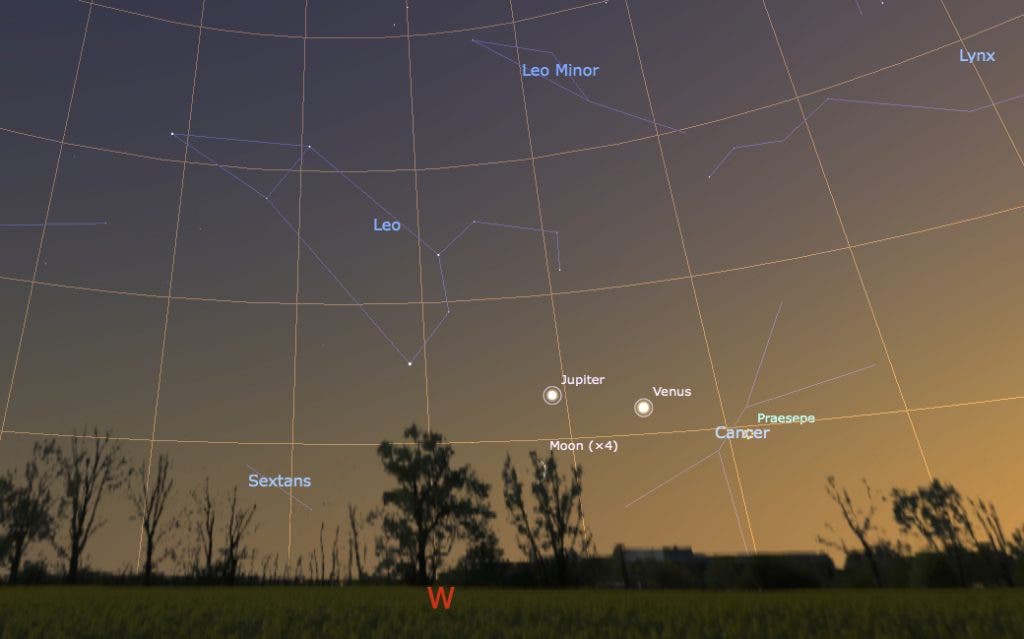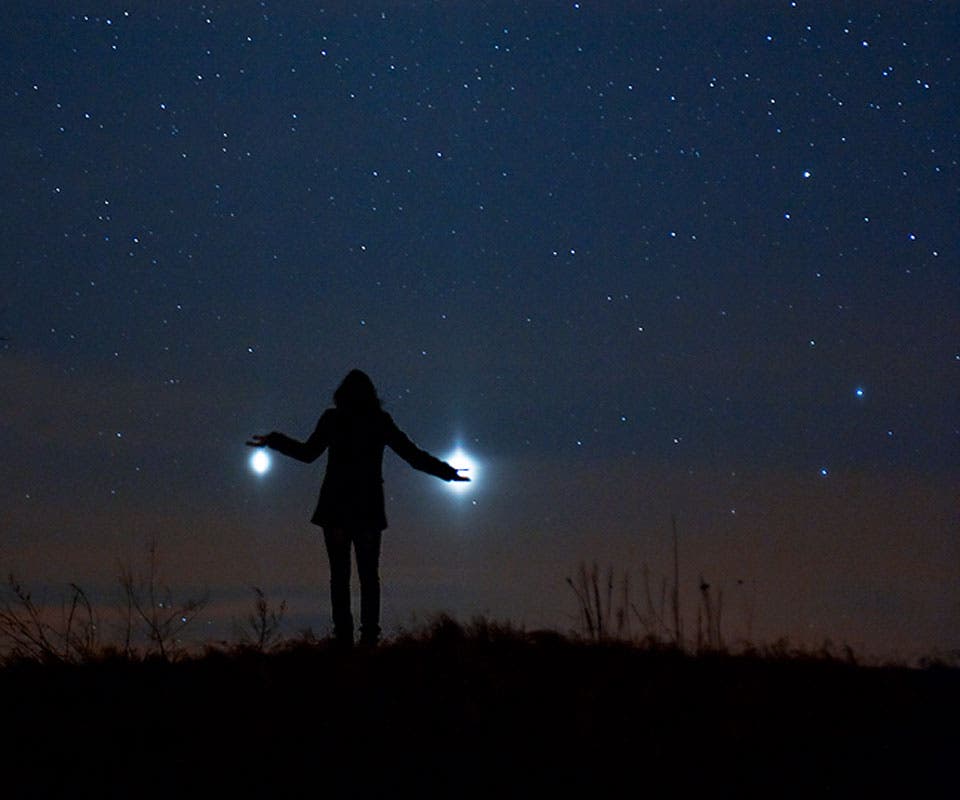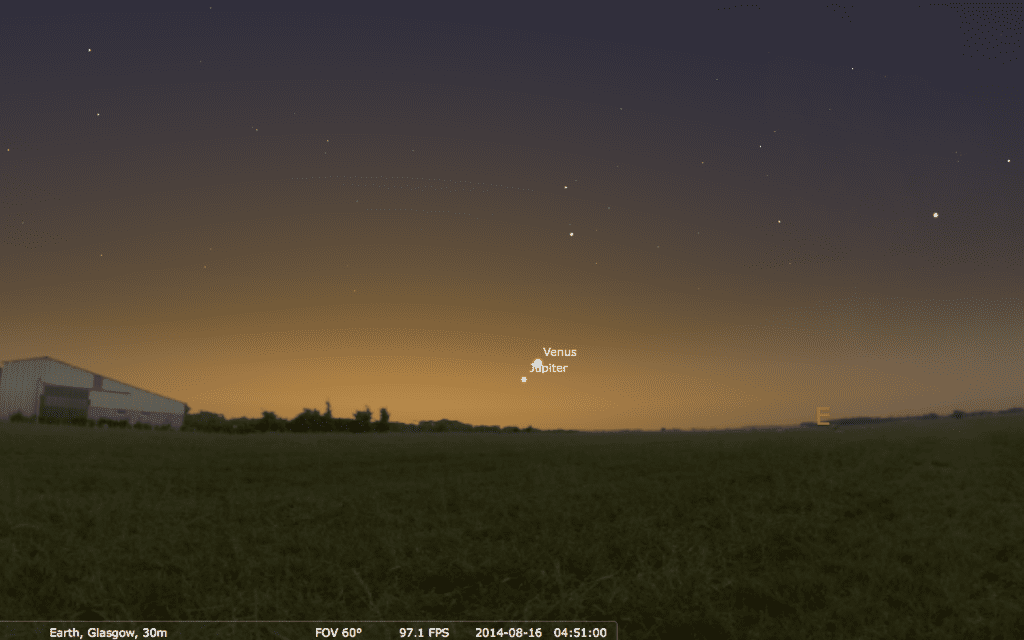Last night, Jupiter and Venus nearly converged on the night sky, being so close that you actually don’t need a telescope to see their celestial dance.
“Throughout the month of June 2015, the two brightest planets in the night sky, Venus and Jupiter, are going to converge for a close jaw-dropping encounter,”said NASA in a news release.
#perth if you look west at sunset and evening and see a bright star, its Jupiter and Venus at conjunction @tweetperth pic.twitter.com/CpScNb7zW8
— Perth Observatory (@perthobs) June 30, 2015
The two planets were only a third of a degree apart, the closest they’ll get until August 2016.
“You’ll be able to hide the pair not just behind the palm of your outstretched hand, but behind your little pinky finger,” NASA added.
It’s one of the few astronomic events you can actually see with the naked eye, and what makes it so spectacular is that Venus and Jupiter are so bright despite having no light of their own (they are planets, reflecting the Sun’s light). The two planets are actually the brightest objects on the night sky aside for the Moon. Venus is so bright because it is covered with clouds that reflect light very well and is the closest planet to Earth.
Interestingly enough, they appear to be about the same size when viewed from Earth. Even though Jupiter is 12 times bigger than Venus, it is also 12 times farther away. Here are some more pictures of the event:

View of Jupiter and Venus in the evening sky after sunset at around 11pm on 20 June 2015. On this night the crescent Moon lies just below Jupiter. To the right of Venus, using binoculars, may just be seen Praesepe, the famous “Beehive” star cluster, though this will be a difficult object in the twilight and at such a low altitude. The bright star to the left of Jupiter is known as Regulus, the principal star of the constellation Leo, though it is actually a multiple stellar system.











